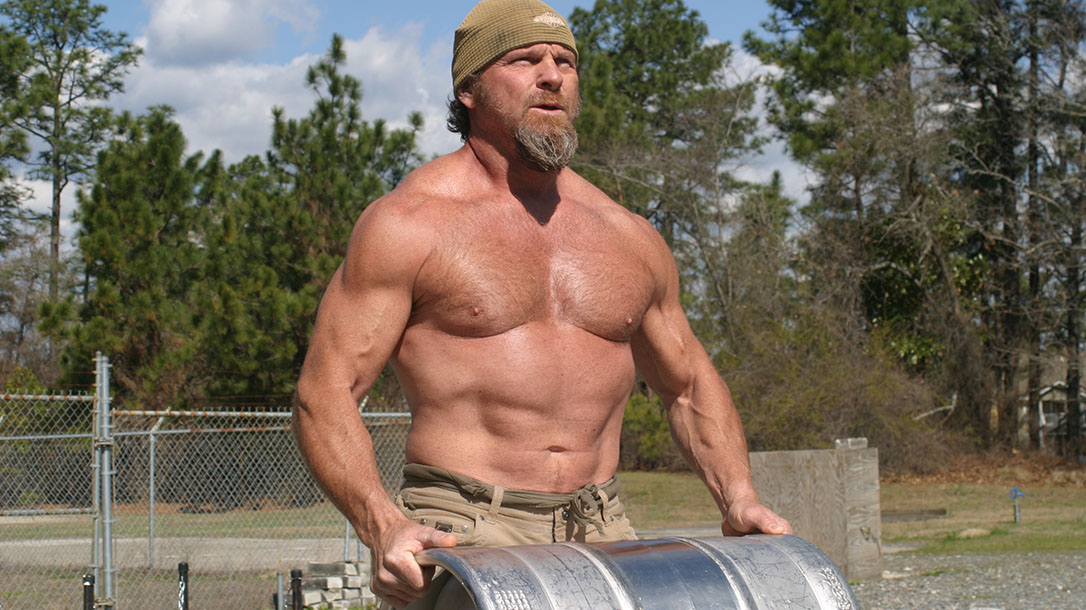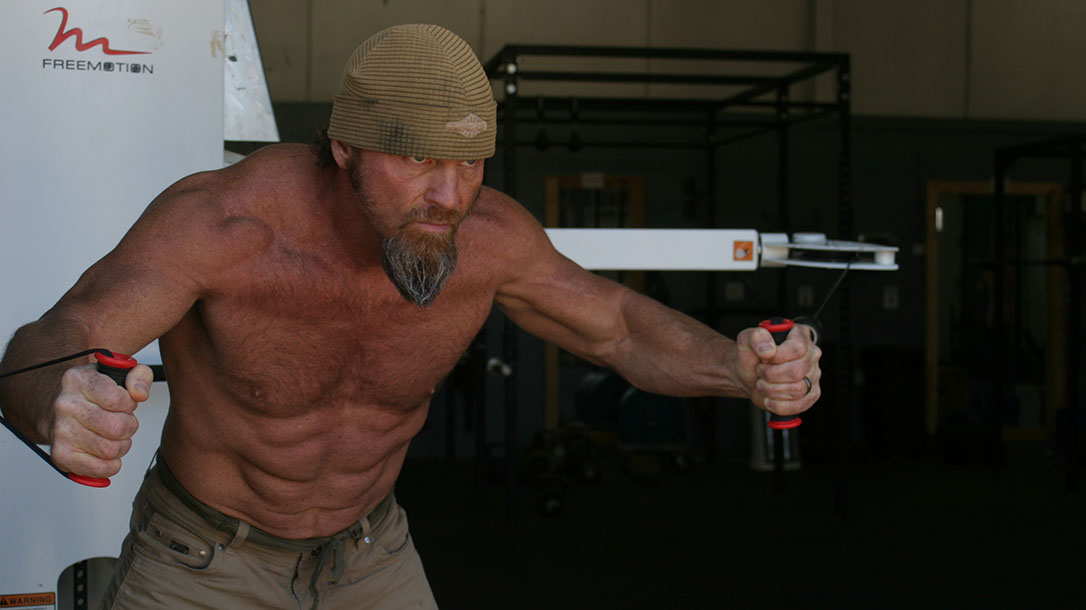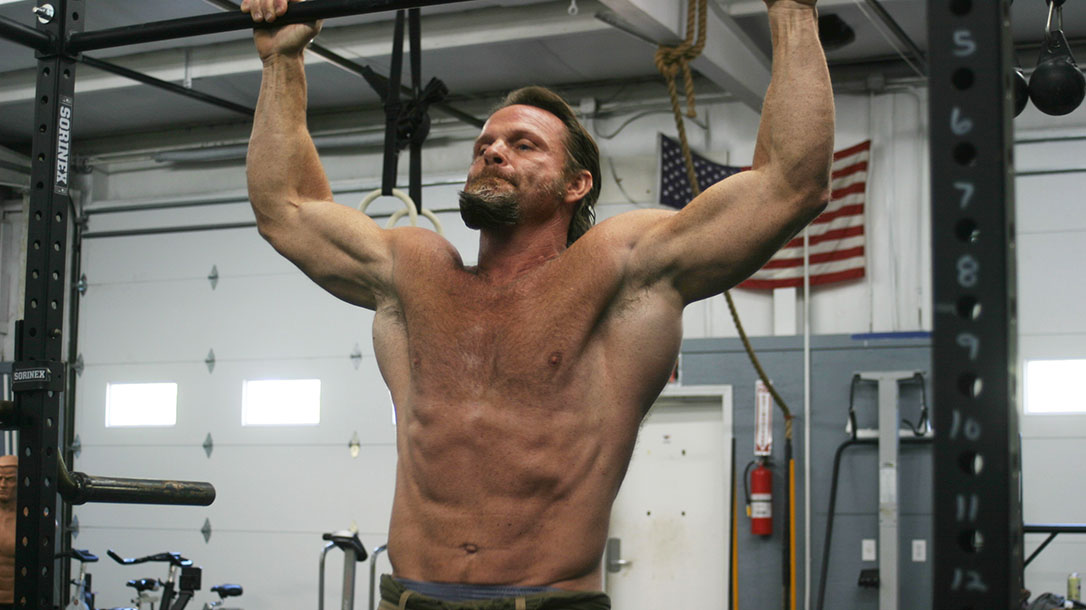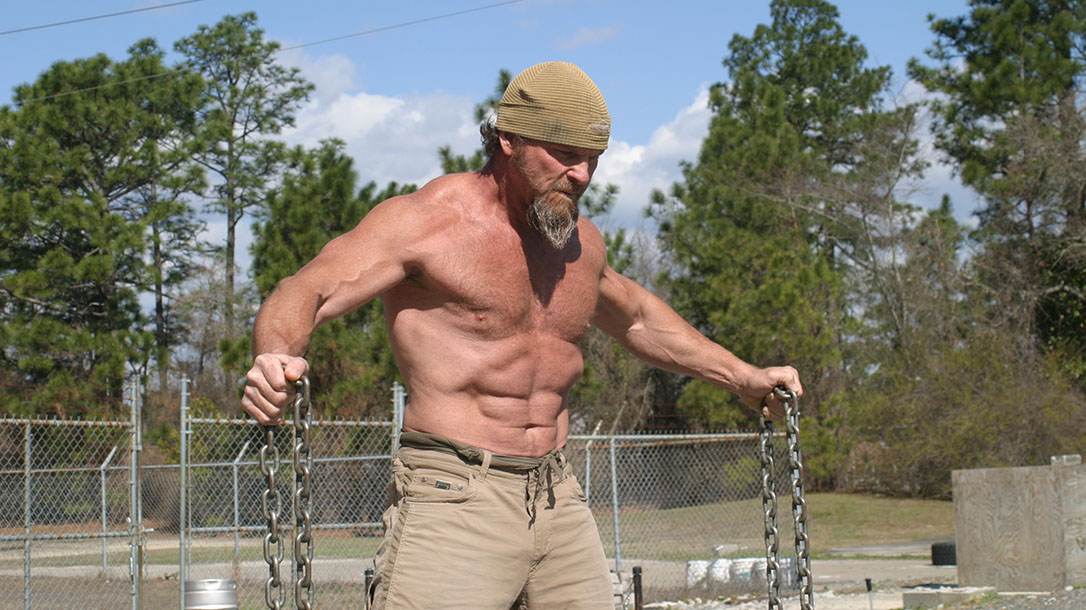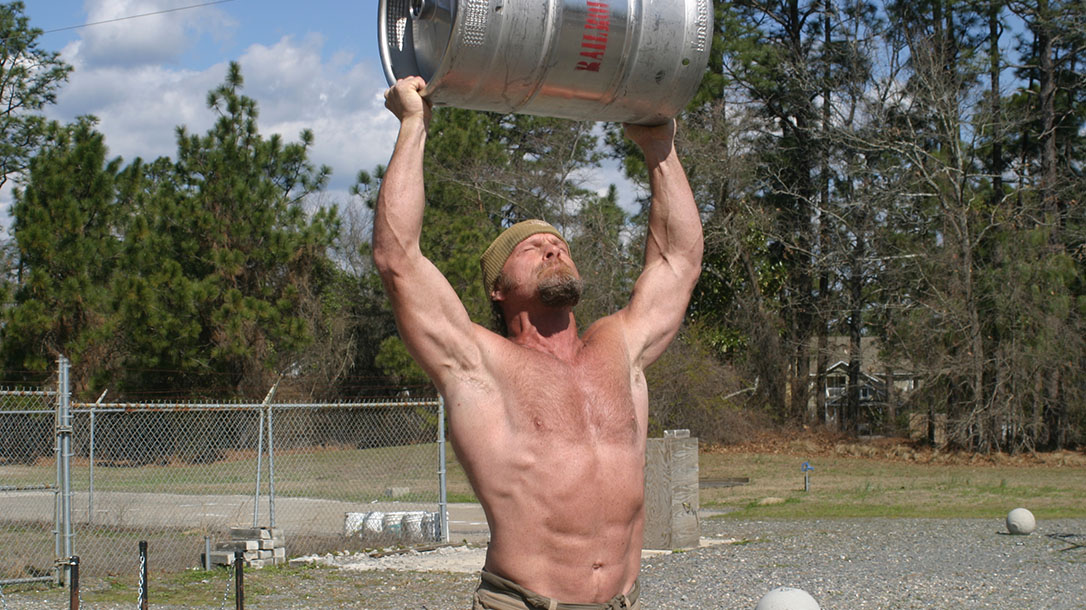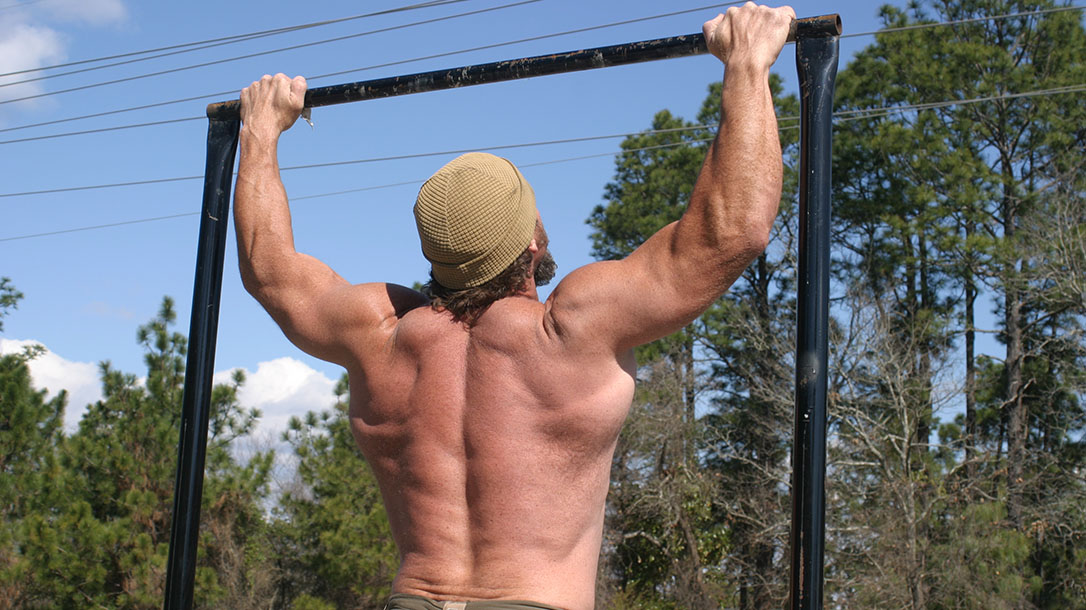Telling a guy how to work out is like telling him how to work the barbeque pit in his backyard. Most of us learn how to work out via muscle magazines or through tips from the “Tough Guy” at the gym. You then fall into a rut and live in a world where functionality takes a backseat to cosmetics. You may put peaks on your biceps and chisel your abs, but you’ve still got a pencil neck, your balance sucks, your grip strength is subpar, and you’re promoting injury.
When it comes to weight training, working individual body parts is virtually an anachronism. Isolated training of a muscle group can actually weaken the muscle group because it needs to be used in a functional fashion. If you are still working body parts, you are probably one of three people: You are a bodybuilder, you are recovering from an injury and are going through physical therapy or you have no idea what you are doing.
Advertisement — Continue Reading Below
Through mentoring and education, I got away from the nonsense of “pretty muscle” building and around 15 years ago started a performance-based training regime. The difference between performance-based training and outcome-based training is that I am allowed to work within my capability level. Outcome states how many, how much and how fast. Performance states how well. If we work this way, we can work with what we are given, because performance is measured by doing what we can with what we have.
Combat Strength Training
I define the system I use as “Combat Strength Training,” or CST. This is a system that retrofits the body, or combat chassis, so it performs with maximum efficiency at maximum capacity.
Focusing on self-preservation and longevity, CST introduces the chassis and its external components to power, strength and agility training in all planes of motion within the full muscle spectrum range. It enhances the chassis’ performance and tactical effectiveness through maintenance, education and combat-replicated movements while following a safe, comprehensive, systematic and progressive format.
Advertisement — Continue Reading Below
As the chassis is upgraded, it becomes a battlefield multiplier that in turn becomes a force multiplier. CST improves rate-of-force production, strength, muscular development, speed, quickness, proprioception and functional flexibility. To put it simply, there are five keys to building a better combat chassis.
1. Don’t be a human garbage can.
Your diet should be simple: Eat real food. Food does not come in a bag or box. If it does, it is a product. Shop at the periphery of the grocery store. What do you need in the other aisles? Coffee, salt, pepper, olive oil. In addition to food, consider that water is the number-one dietary supplement. Power-slam a quart every morning to start the day. For me, this is habitual, and it was life-changing when I first started this practice.
2. Consider the reasoning behind staying fit.
In my opinion, there are four reasons for working out and staying fit: self-preservation/longevity, saving your life, saving someone else’s life and kicking someone’s ass.
Advertisement — Continue Reading Below
Work within your capability limits. Don’t be subservient to someone else’s programming written on a white board. Make incremental improvements. Ask yourself this: If I cloned myself yesterday, could I kick my clone’s ass tomorrow? It’s all about fitness, not broke-ness. So, if you incorporate Olympic-type movements, be sure to get some coaching. Work smart.
3. Work all planes of motion.
The sagittal plane passes through the body front to back, dividing it into left and right side. Movements in this plane are the up and down movements of flexion and extension.
Advertisement — Continue Reading Below
The frontal plane divides the body into front and back. Movements in this plane are sideways movements called abduction and adduction.
The transverse plane divides the body into top and bottom. Movements in this plane are rotational in nature, such as internal and external rotation, pronation and supination. In the transverse plane live lifesaving and ass-kicking movements. This is probably the most important plane of motion to work, and it is also the most neglected.
4. Break down the workweek into phases.
First, consider speed and quickness. Speed means being fast in one direction. Quickness is being fast in multiple directions. Being strong and powerful in a sagittal plane of motion is not enough to ensure combat readiness. In order to ensure that our combat chassis is capable of rapid movement in multiple directions, we must incorporate speed and quickness training into our regime. As I’ve said before, mobility is survivability. It is hard to attack a moving target, especially one that is well coordinated and athletic.
Advertisement — Continue Reading Below
Power is the rate of force production. “How much and how fast.” In other words, power is the rate at which work is performed. It is the product of both strength and speed. As we age, our muscle power ebbs even more swiftly than our strength. So exercises that can produce gains in power become especially important later in life.
Real-world examples of power include throwing a massive left hook into an adversary’s bread basket, heaving a chair or table through the window of a burning room, hoisting a loved one out of harm’s way or an injured teammate into a fireman’s carry, mule-kicking a door open to access a crisis site, using a door ram on a primary breach point, and from a secured-headlock position, flipping an adversary ass over teakettle.
Strength equals “how much.” Strength training builds muscle—the stronger you are, the more muscle you’ll have. However, strength training is not bodybuilding; building muscle is a byproduct of exercising, not its goal. Strength training increases bone density and, when done properly and through the full range of motion, also boosts a person’s flexibility and balance. Additionally, knowing that we have the ability to resist being moved or broken by an opposing force is a real confidence booster.
Advertisement — Continue Reading Below
Hypertrophy is the enlargement or overgrowth of an organ or tissue as a result of an increase in the size (as opposed to the number) of its constituent cells. The main reason people should build muscle is because it adds strength to the body. And strength helps you live your life more easily.
Your combat chassis houses about 650 muscles. Each has its own function in helping the body conduct its daily activities. Muscular development helps strengthen these connective tissues, also increasing bone density. By doing this, you’re reducing both your risk for injury and your odds of developing osteoporosis later in life. This is something you should think about right now versus later in life, when you can’t walk your fat ass up a flight of stairs.
5. Mitigate excuses.
I spent 22 years as a ground-pounding special-ops soldier, and in that time I had four reconstructive surgeries and 13 broken bones. I am 53 now and am still kicking ass.
Advertisement — Continue Reading Below
Besides laziness, time seems to be the No. 1 excuse for not working out. My CST Training program follows this simple recipe: Work in anaerobic chunks, in circuit to near metabolic threshold, to meet an aerobic goal. If you work under these guidelines, your workout should take only between 25 and 35 minutes. I, like many of you, do not have disposable time. This type of format is simple, but it is not easy. Hard work sucks, and not everyone is cut out for it.
We all have different goals when it comes to our PT program. For some, it is as simple as cosmetics; for others, it is a requirement. Combat readiness, however, is non-negotiable. This should be the main focus and should drive what we do and how we do it. Put your big fat ego aside and understand that we all perform differently and that performance can be measured by doing what you can with what you have.
For more from Pat McNamara, please visit TMACSinc.com.
Advertisement — Continue Reading Below
This article is from the summer 2018 issue of Ballistic Magazine. Grab your copy at OutdoorGroupStore.com.
